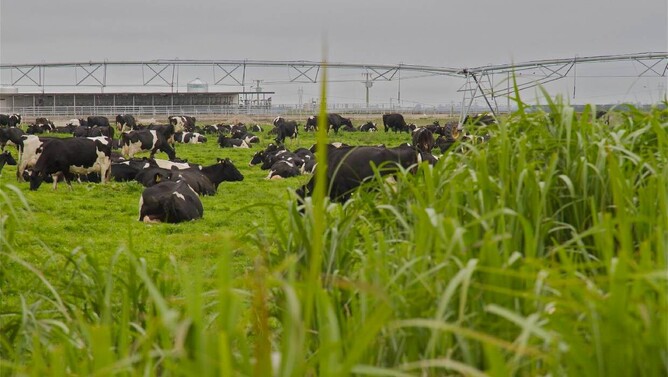Peter Brown of Miscanthus New Zealand Ltd (MNZ) says Lincoln University, Fonterra and local government are taking a close look at the plant’s potential.
MNZ has stands of Miscanthus growing in Huntly, Helensville, Nelson, Darfield, and Taupo.
“I believe it’s poised to suddenly take off. I think the potential is absolutely enormous. My vision for the future is that every farmer in New Zealand with land of suitable terrain would have some Miscanthus on it, even if it is just for their own use for things like calf bedding.”
It is already being used commercially in England, parts of Europe and North America, he said.
From a commercial biomass perspective, it would give farmers a steady guaranteed income stream on top of their milk, meat or crop, Brown said.
It grows well in New Zealand in most areas. It is best to grow it on flat to rolling country because of the difficulties of harvesting on hill country.
The type used in New Zealand were sterile hybrids of Miscanthus sinensis and Miscanthus sacchariflorus. The leaves were not used for commercial purposes yet, although they could be in future as mulch, or even as low-quality stock feed, he said.
New Zealand farmers were looking at a return of at least $800-$1400 a hectare a year after three years once the plant was fully established. It is already being used for bedding for racehorses, dairy sheep. calves and dairy cows and there is growing interest in it as a domestic or commercial mulch.
It costs about $5000 per ha to establish commercial scale areas Miscanthus, but this is an upfront rather than ongoing expense. Once established, the only extra costs incurred were in harvesting, he said.
It has not been grown long enough in New Zealand to know how long a rhizome could keep producing commercially worthwhile product. In the United States there are 25-year-old Miscanthus stands still in production and Brown sees no reason why Miscanthus would not do as well in New Zealand.
That meant establishment costs were minimal if a grower was looking at it as a long-term investment. Those costs also can be reduced if larger areas are planted.
Brown understands there are discussions in Gisborne and Hawke’s Bay around using it for erosion control on hill country and for stream protection in conjunction with native trees.
Fonterra has also been looking at Miscanthus closely and MNZ has a 2ha trial plot near Darfield on Fonterra land.
There, it is being tested as a potential biomass fuel for its coal-powered milk powder dryer. Initial trials showed Miscanthus burns quickly and inefficiently but needs to first be processed into a dense high quality pellets for best use as a fuel source.
A Fonterra spokesman said its Darfield plant had the means to co-fire its boilers with coal and another form of energy. Miscanthus was an option for fuel in the future.
“We continue to look at Miscanthus as an option for co-generation, but it is one option in five or six.”
Brown said a small amount of Miscanthus had been produced as a cubed pellet and work with Fonterra is continuing. The cubes mimicked coal and contained a similar level of energy.
He estimated about 20-30ha of three-year-old miscanthus would be needed for Fonterra to use it as 10 per cent of its boiler fuel over a five-day period. It would supplement coal as a fuel source rather than replace it.
In addition to using Miscanthus successfully through their boiler, Lincoln University has also studied the plant as a source of shelter for stock on South Island farms with centre pivot irrigators.
Professor Steve Wratten of the Lincoln’s Bio-protection Research Centre says that those irrigated trials had produced 30-40 tonnes of dry matter per hectare a year.
“Roughly speaking, the production is proportionate to the rainfall. If you are irrigating it and it’s getting lots of rainfall, you can get better production.”
Like many new ideas in farming, Brown knows it will take time for Miscanthus to catch on.
“Farmers are sometimes set in their ways and it takes time for new ideas to catch on and grow. They often begin through word of mouth or with a small number of adventurous farmers giving it a try, the neighbouring farmer then sees it and copies it. Before you know it takes off and becomes the norm.”
——————————————————————————
View full article (written September 2016) by Gerald Piddock at https://www.stuff.co.nz/business/farming/83171242/multipurpose-plant-has-big-future-in-germany-and-new-zealand
Header image: Giant miscanthus grass growing on trial at a Kirwee dairy farm could be the future of shelter belts in Canterbury.
Article updated and corrected in places in April 2019


